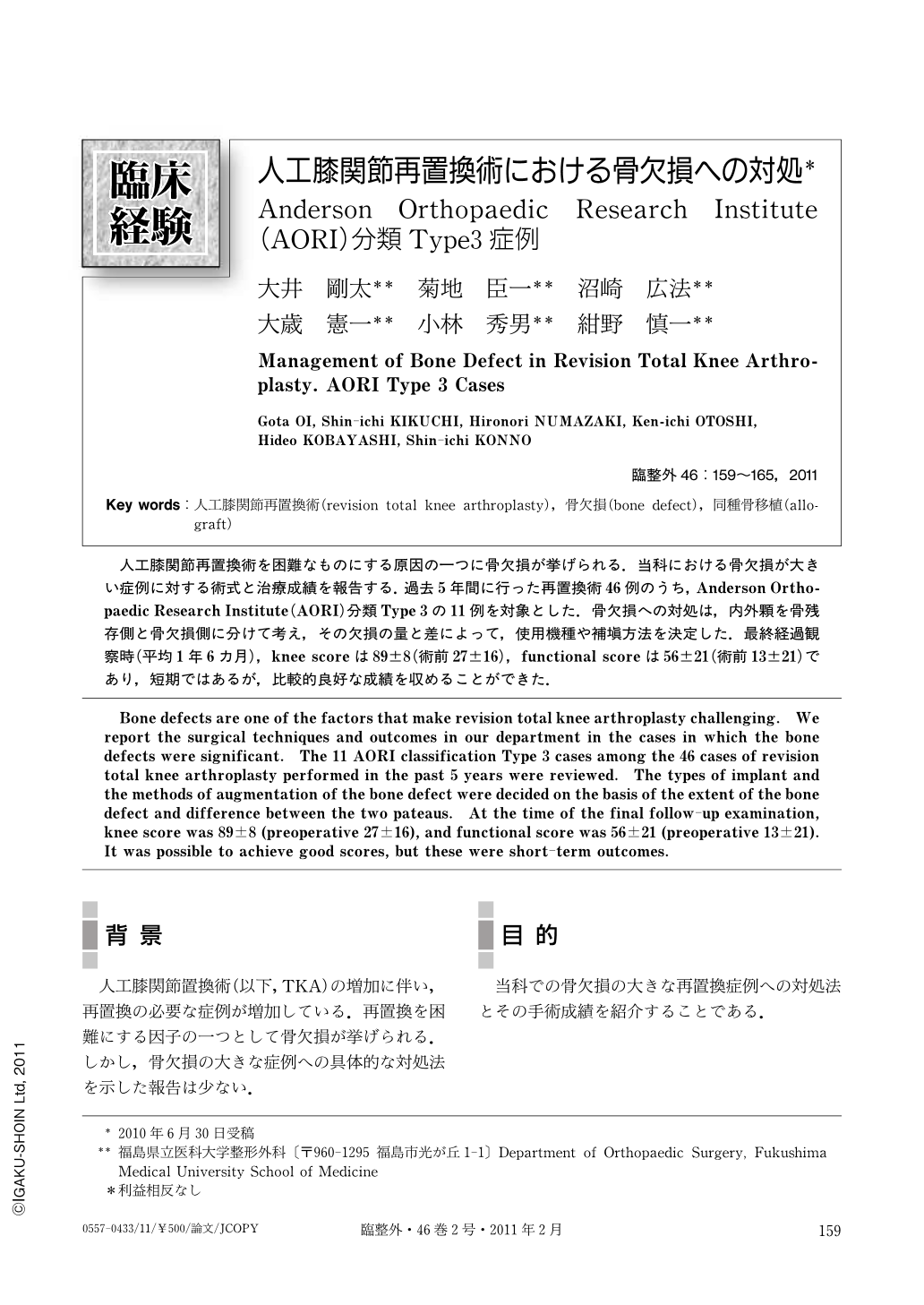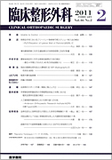Japanese
English
- 有料閲覧
- Abstract 文献概要
- 1ページ目 Look Inside
- 参考文献 Reference
人工膝関節再置換術を困難なものにする原因の一つに骨欠損が挙げられる.当科における骨欠損が大きい症例に対する術式と治療成績を報告する.過去5年間に行った再置換術46例のうち,Anderson Orthopaedic Research Institute(AORI)分類Type 3の11例を対象とした.骨欠損への対処は,内外顆を骨残存側と骨欠損側に分けて考え,その欠損の量と差によって,使用機種や補填方法を決定した.最終経過観察時(平均1年6カ月),knee scoreは89±8(術前27±16),functional scoreは56±21(術前13±21)であり,短期ではあるが,比較的良好な成績を収めることができた.
Bone defects are one of the factors that make revision total knee arthroplasty challenging. We report the surgical techniques and outcomes in our department in the cases in which the bone defects were significant. The 11 AORI classification Type 3 cases among the 46 cases of revision total knee arthroplasty performed in the past 5 years were reviewed. The types of implant and the methods of augmentation of the bone defect were decided on the basis of the extent of the bone defect and difference between the two pateaus. At the time of the final follow-up examination, knee score was 89±8 (preoperative 27±16), and functional score was 56±21 (preoperative 13±21). It was possible to achieve good scores, but these were short-term outcomes.

Copyright © 2011, Igaku-Shoin Ltd. All rights reserved.


